Nine Mile Canyon and Fremont Culture Rock Art
South-East of Price Utah is the small town of Wellington, Utah on U.S. Highway 6/191. A small brown sign posted along the road, marks your turnoff into Nine Mile Canyon.
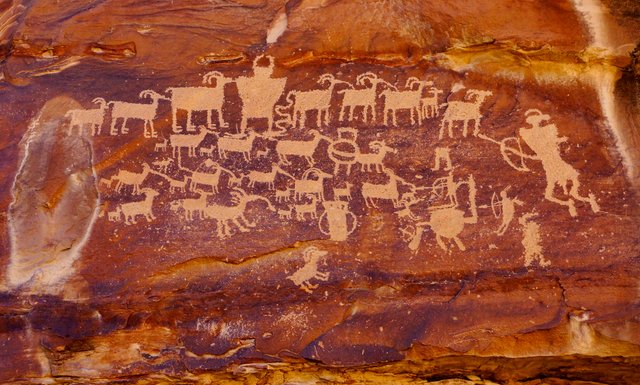
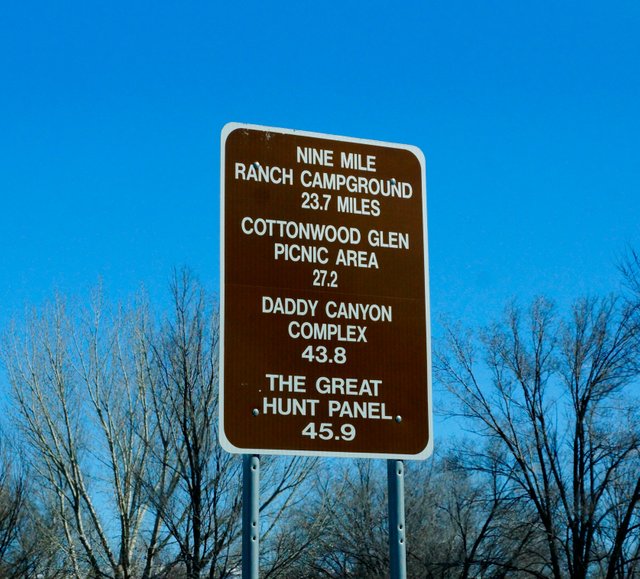
The name Nine Mile Canyon is misleading, as the canyon is actually sixty miles or more in length. Until 2004 it was an unpaved road, but due to the oil and gas industry, the road is blacktopped almost fifty miles into the canyon to the Great Hunt Panel. Despite being paved, it’s not a heavily traveled road, which makes for a leisurely day trip in and out of the canyon.
Nine Mile Canyon has been a major thoroughfare through the West Tavaputs Plateau of central Utah for nearly 8,000 years. On my trip, I ended up having to exit the canyon the same way I came in, as there was mud and snow well past the Great Hunt Panel. When the road is passable, there are two other exit points.
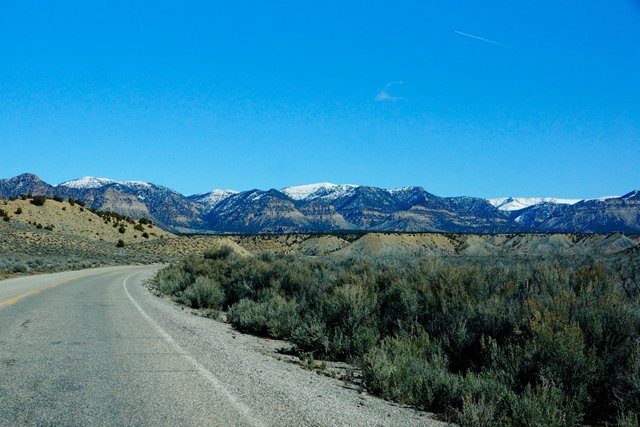
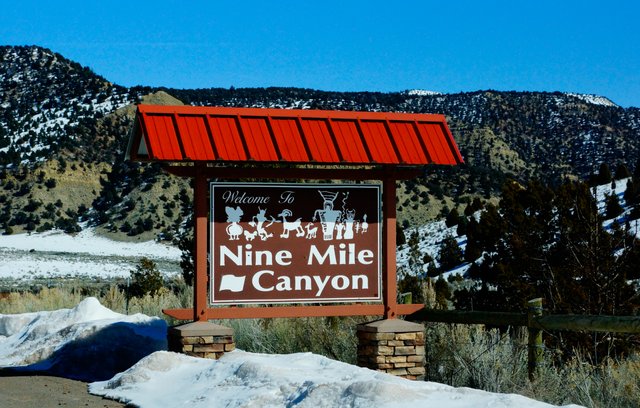
For longer stays, the Nine Mile Ranch www.9mileranch.com offers a bed & breakfast, cabins and camping.
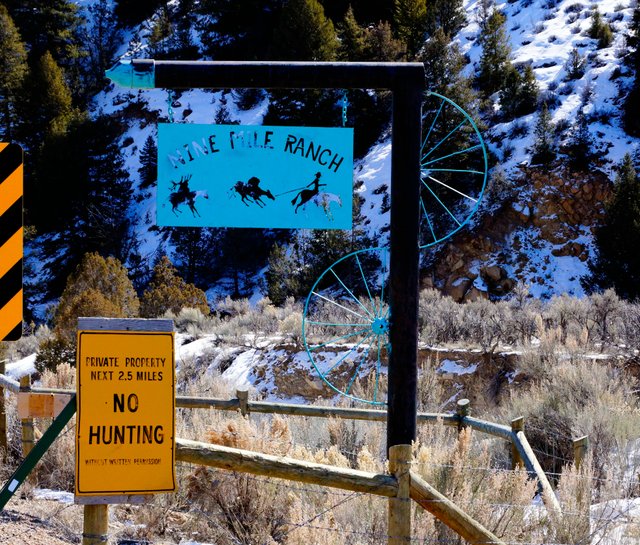
There were lots of deer grazing in the fields and along the roadside…another reason to drive slower.
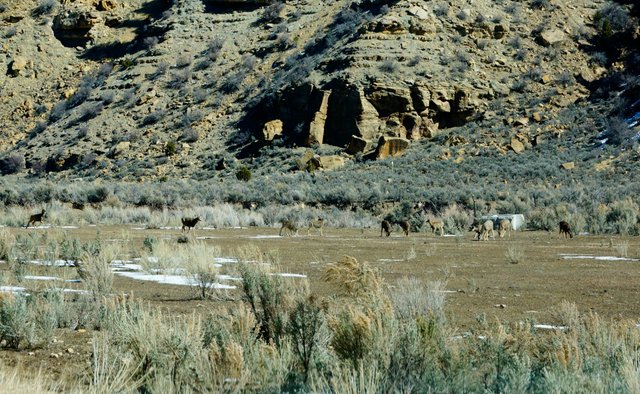
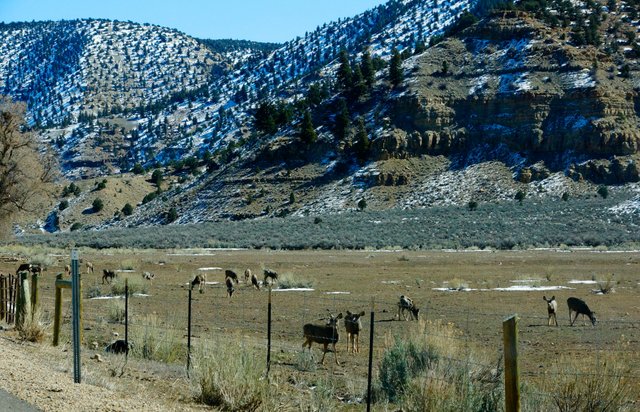
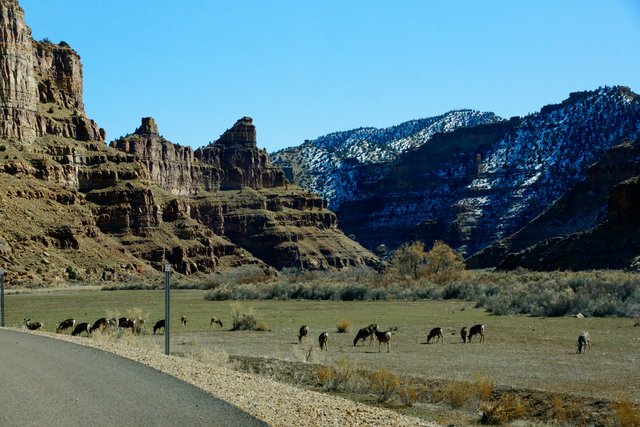
The first petroglyphs start appearing a little more than five miles in. The majority are not signposted, so you have to drive slow and look at the sandstone panels on boulders and cliff walls to spot them. The good news is that most can easily be seen from the comfort of your car right along the roadside. I recommend however, a pair of binoculars and a camera with a zoom lens to really get a good view and great pictures.
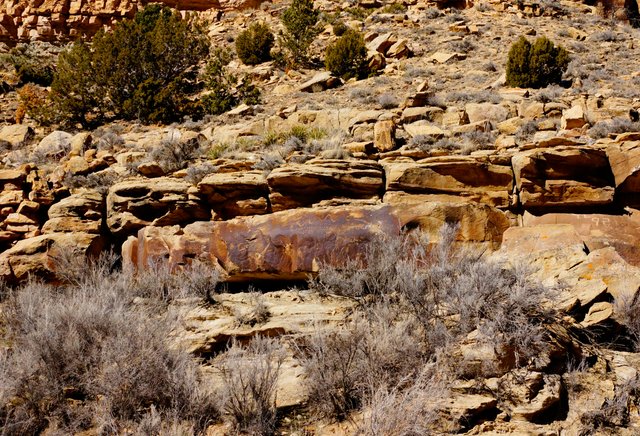
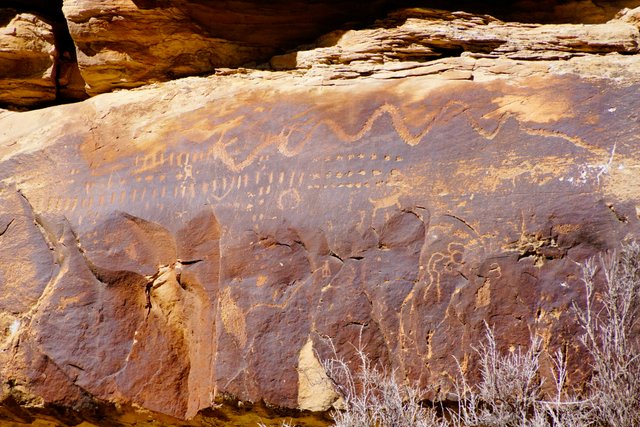
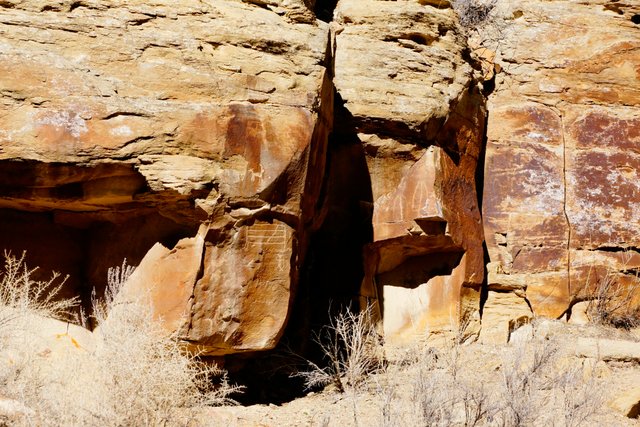
There are literally thousands of petroglyphs, and some pictographs higher up the hillsides, and in the side canyons for those that are able to hike.
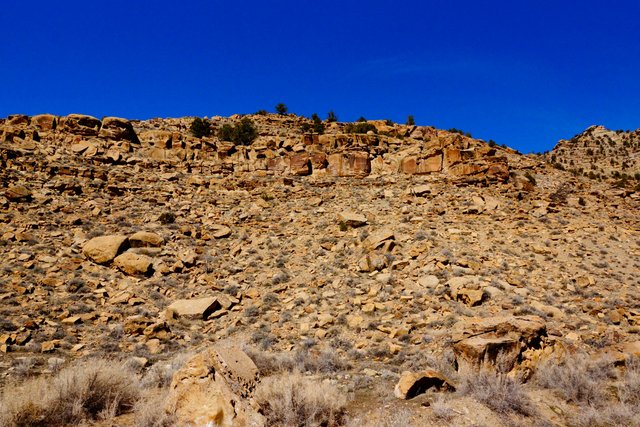
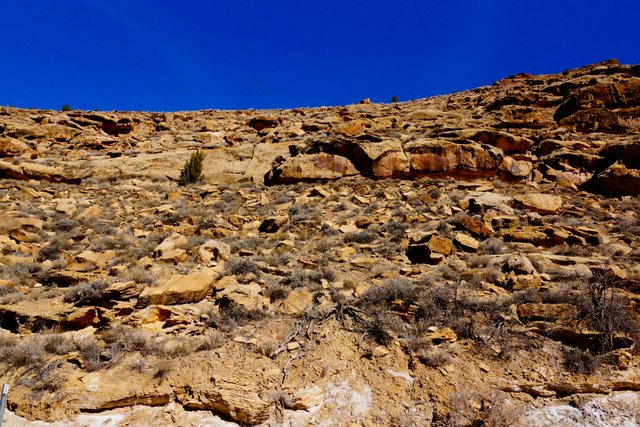
The petroglyphs and pictographs date back to the Freemont Culture 300 – 1200 AD and some historic graffiti from the 19th century pioneers.
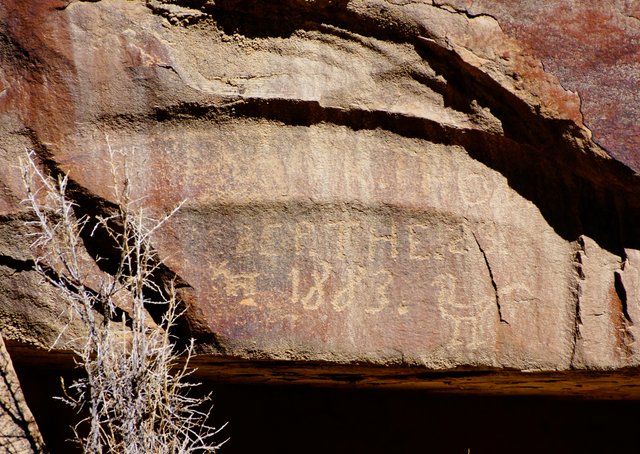
There are a few dilapidated old buildings along the road, one being a stage-coach stop.
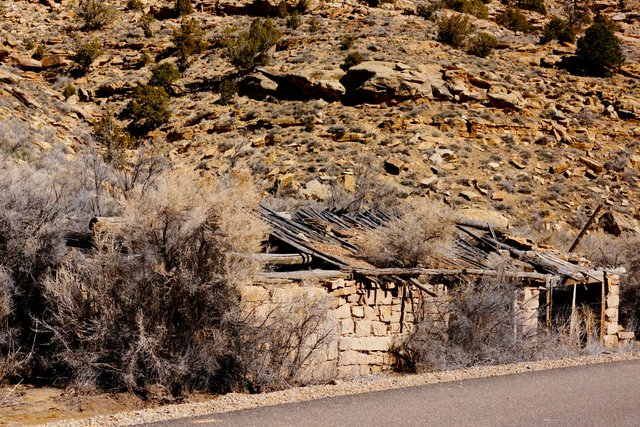
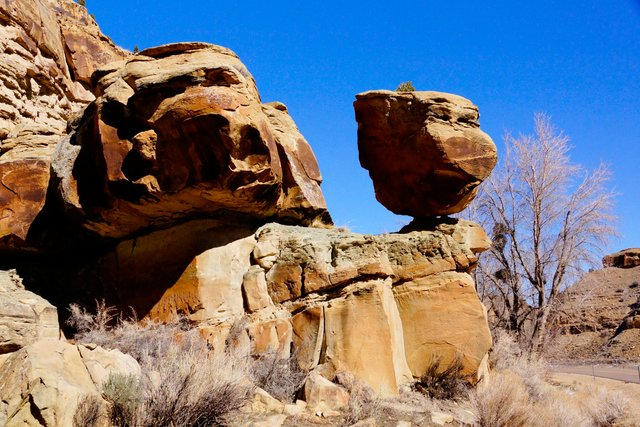
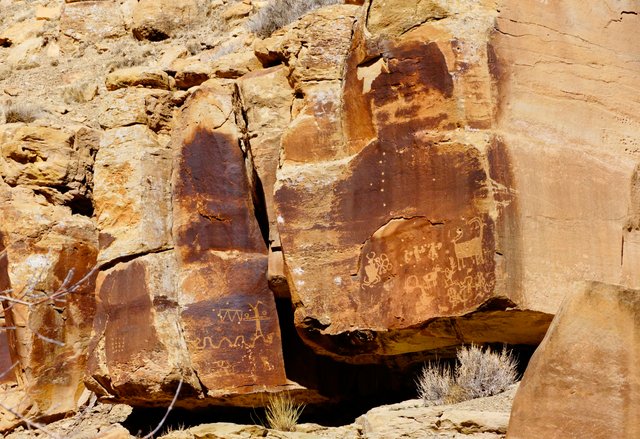
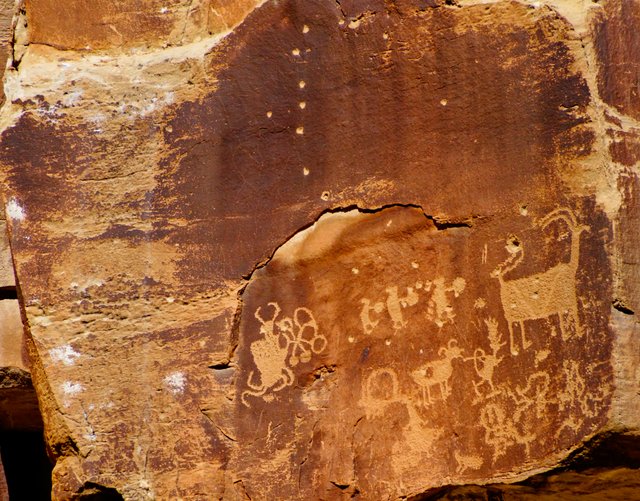
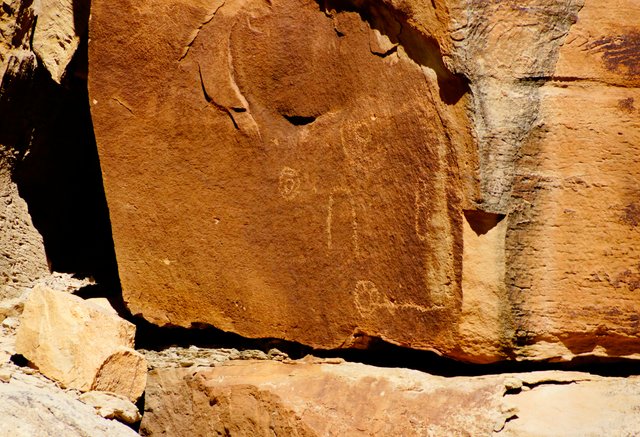
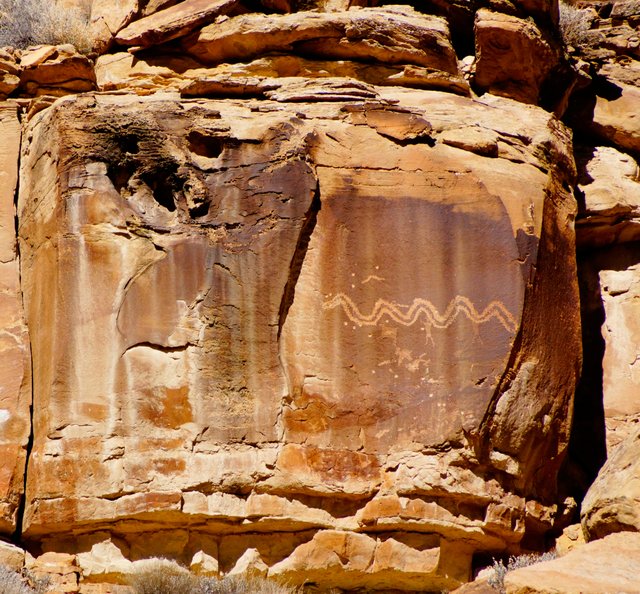

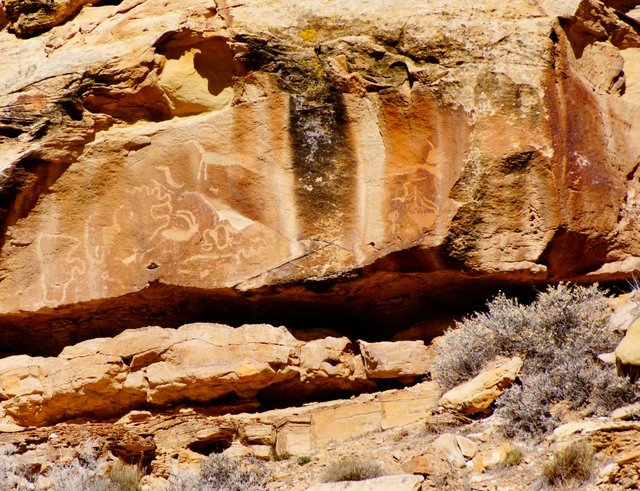
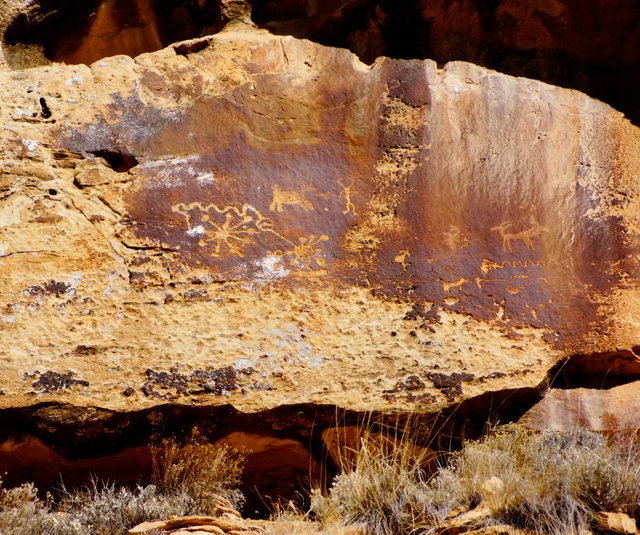
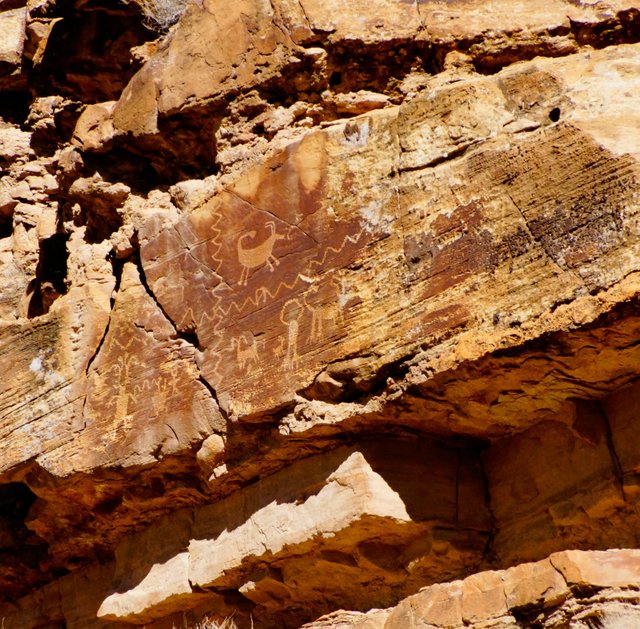
An alternate route out of the canyon is to Myton, Utah
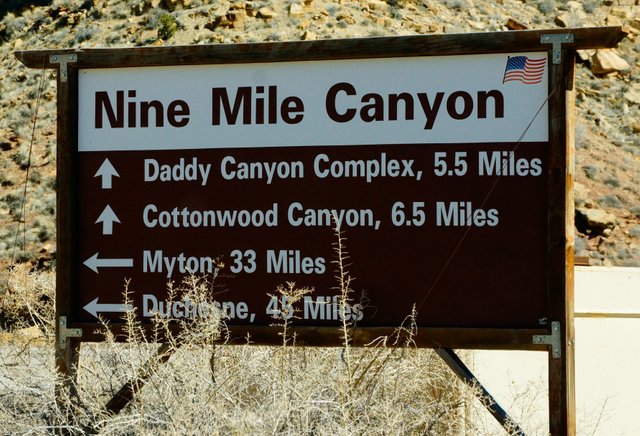
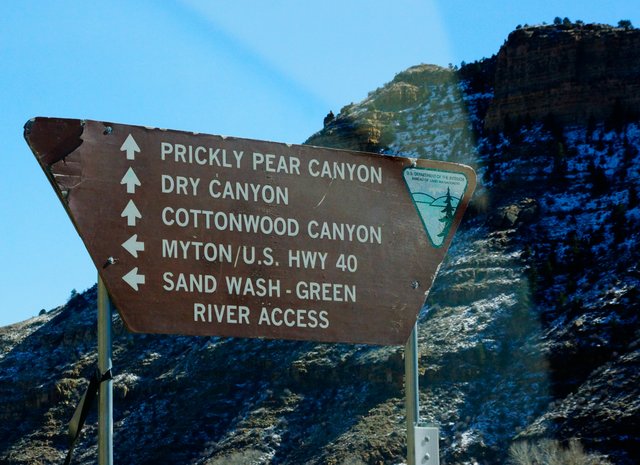
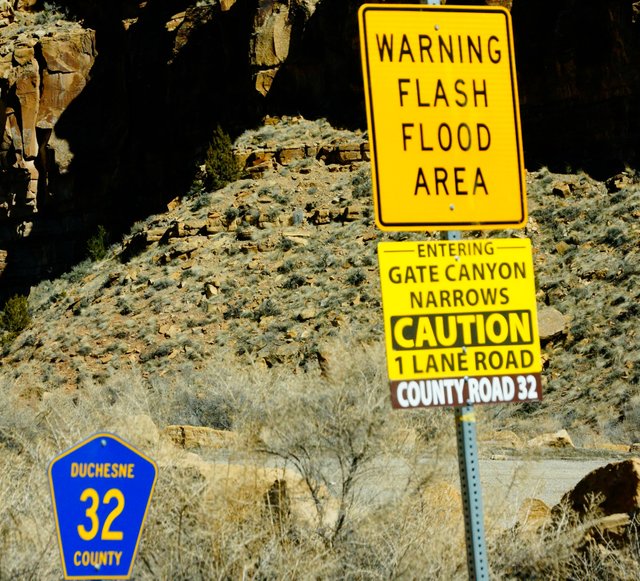
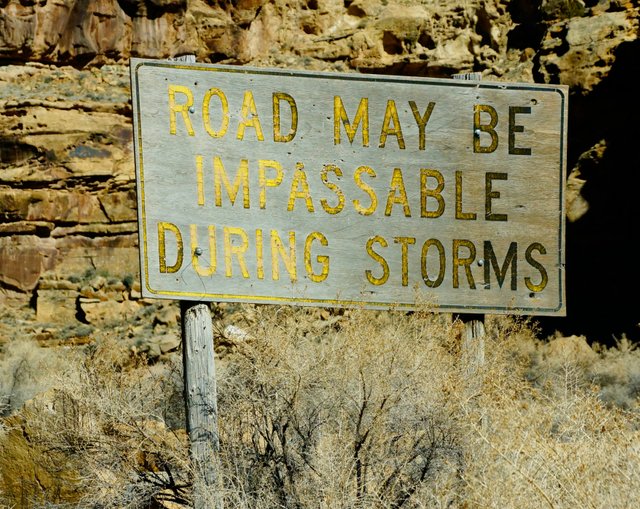
A side trip up Gate Canyon for a couple miles netted a few good photo’s of rock formations, but no petroglyphs.
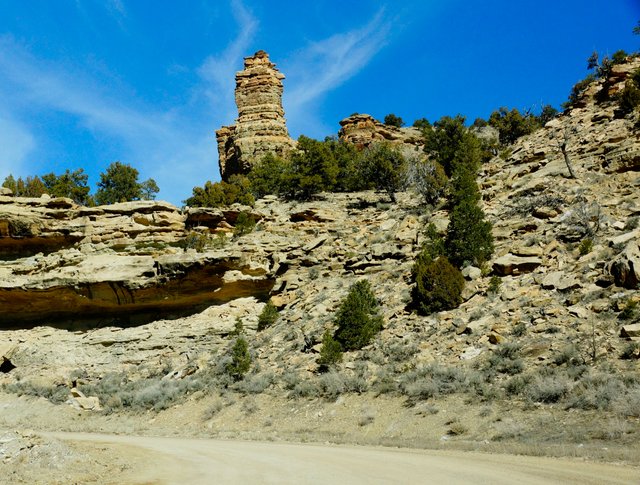
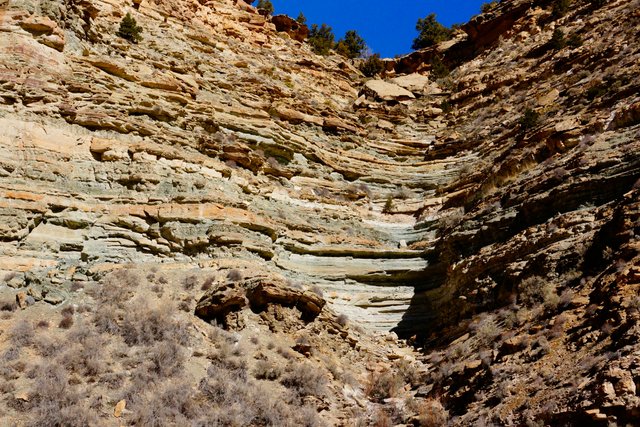
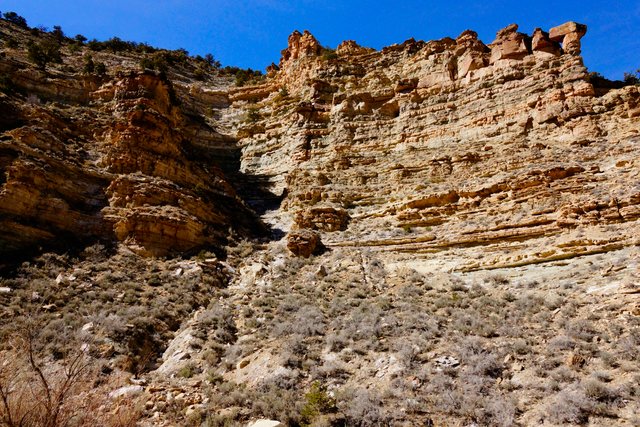
At Daddy Canyon parking area there are the remains of an old ranch corral, and many well preserved petroglyphs, along with a 0.75 mile trail that runs along the base of the cliffs for up close viewing of the ancient artwork.
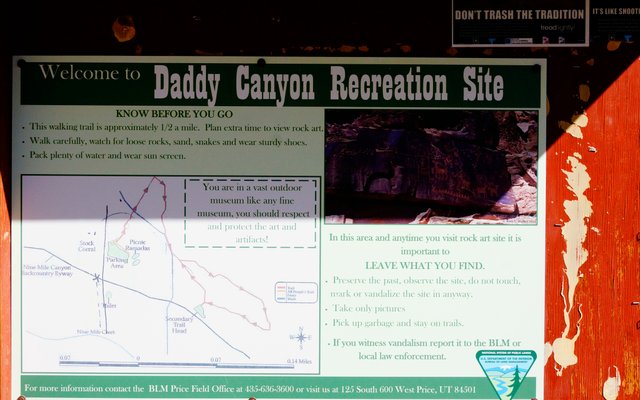
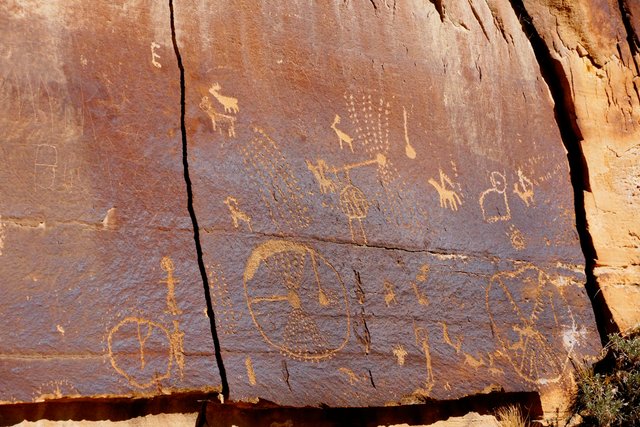
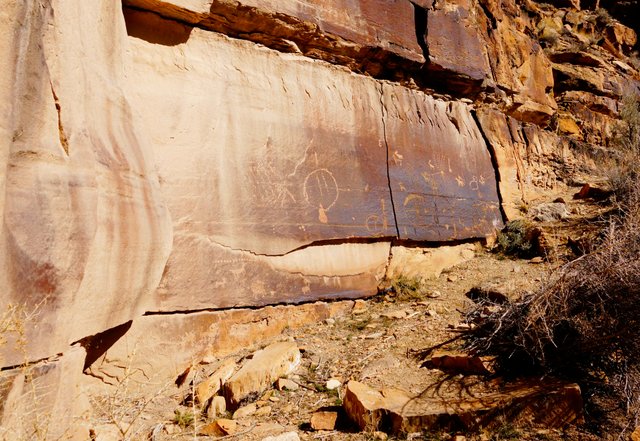
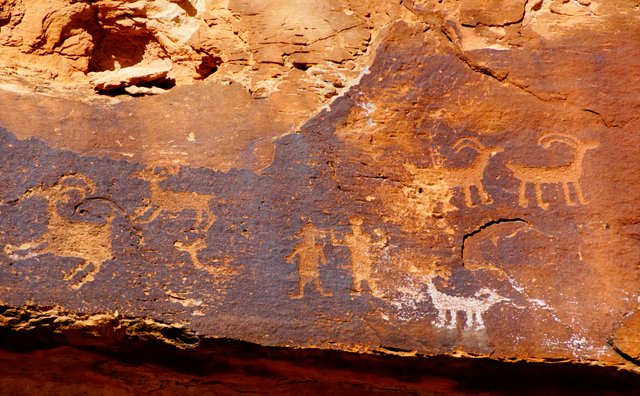

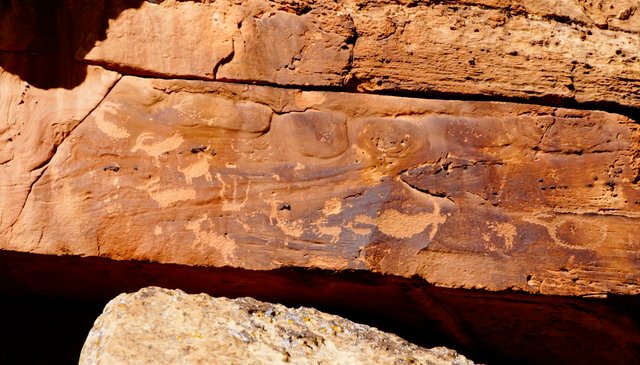
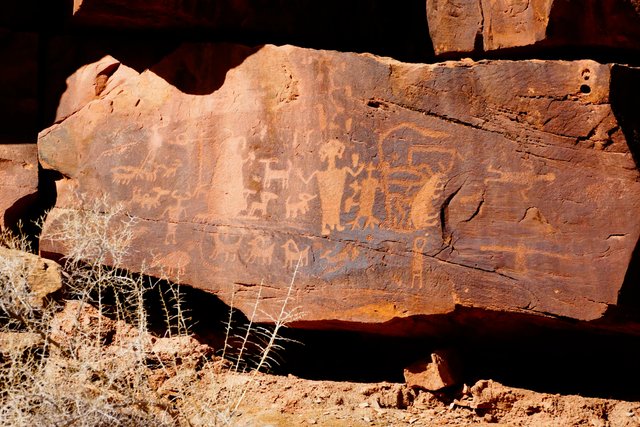
Further down the road, the landscapes were beautiful.
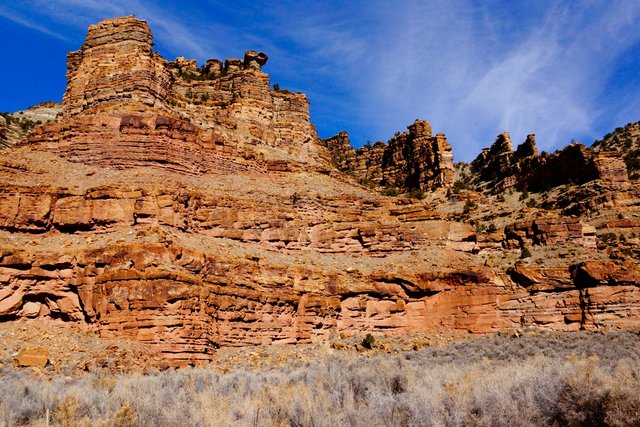
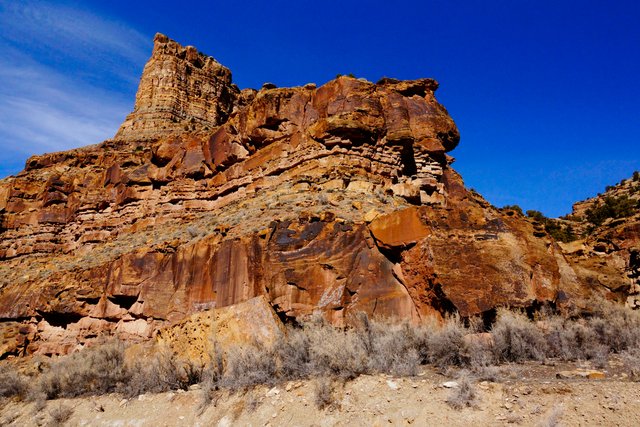
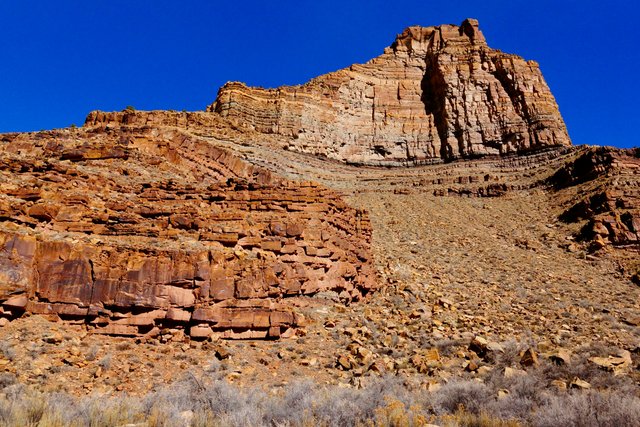
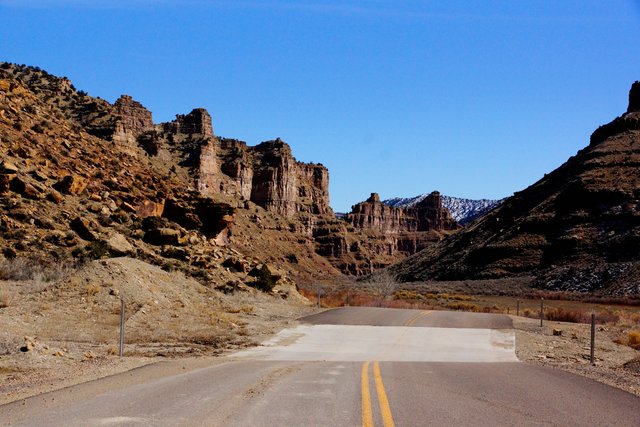
A short, steep path up the hillside leads to the Freemont Village, which most might find unimpressive; however, the views up and down Nine Mile Canyon are grand.
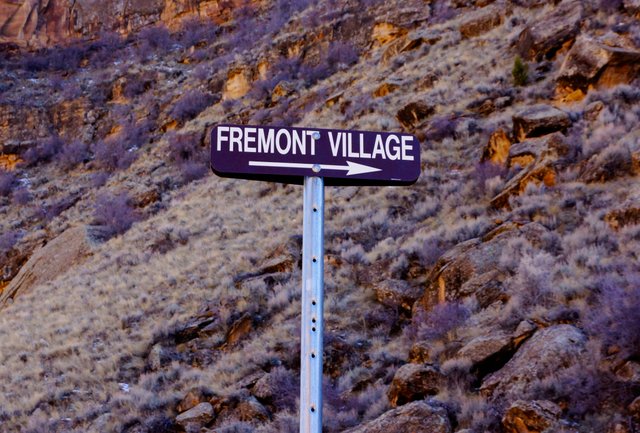
The dwellings were rock overhangs, or pits in the rocks.
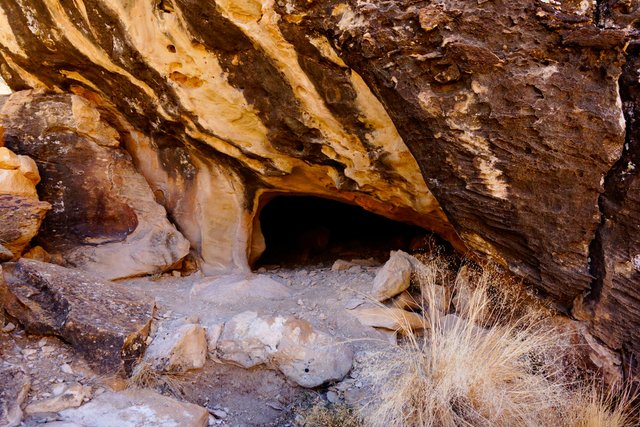
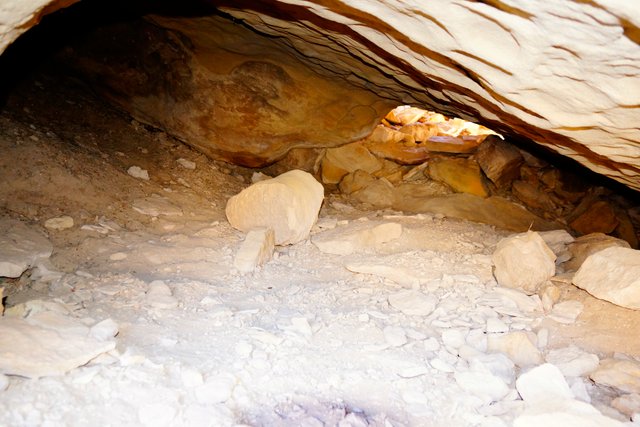
The next two pictures are of the hollow rock mound in the previous photo's as well as the view down the canyon.
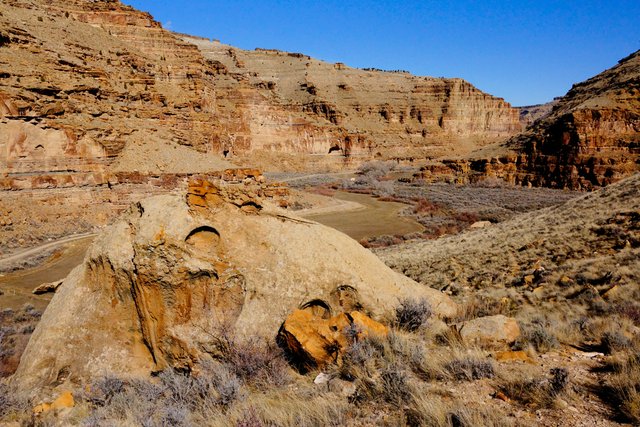
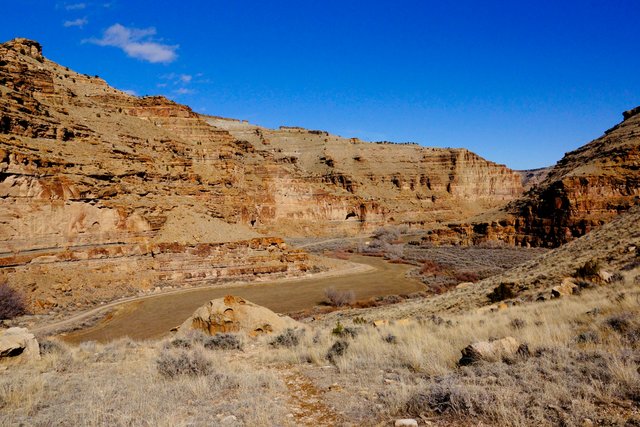
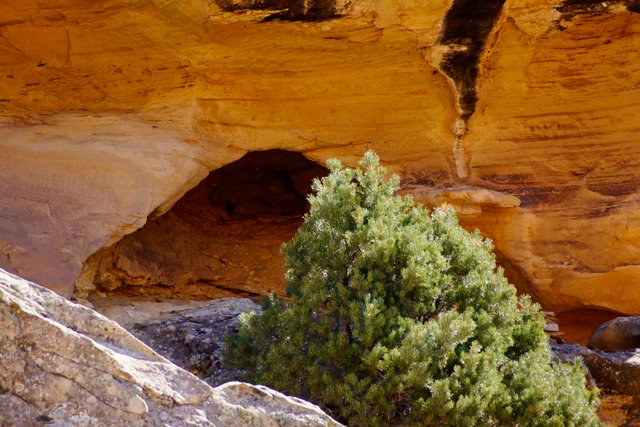
There was a short loop on the left with an overhang in the rocks, which had several petroglyphs in the rock. Three times I saw the carvings of buffalo, which indicate at that time, there were heards in and around the canyon.
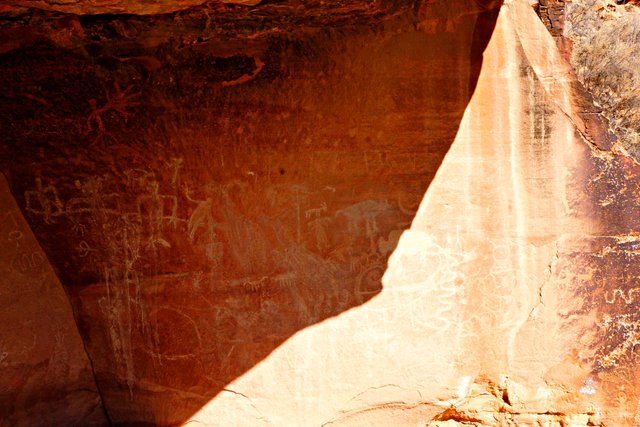
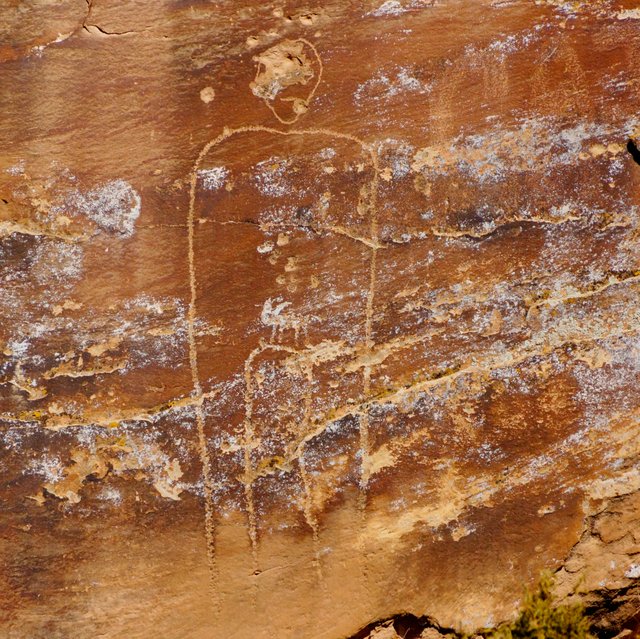
Finally the Great Hunt Panel, which is the most famous rock art panel in Utah.
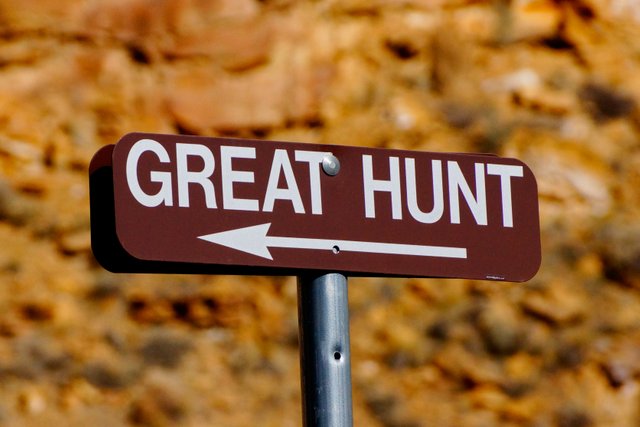
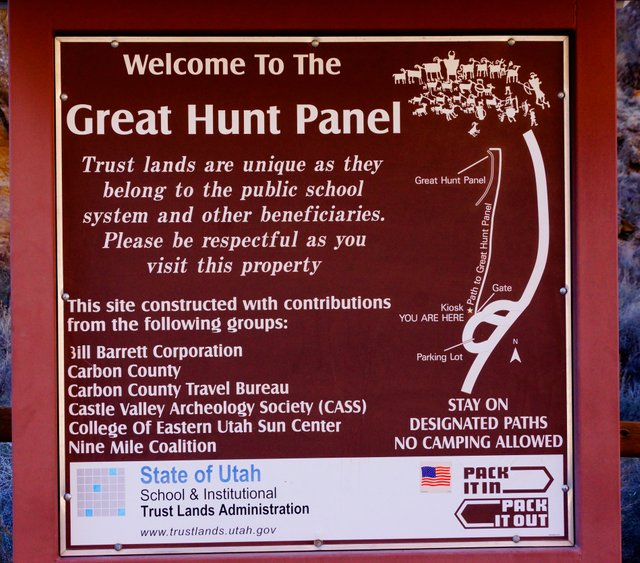
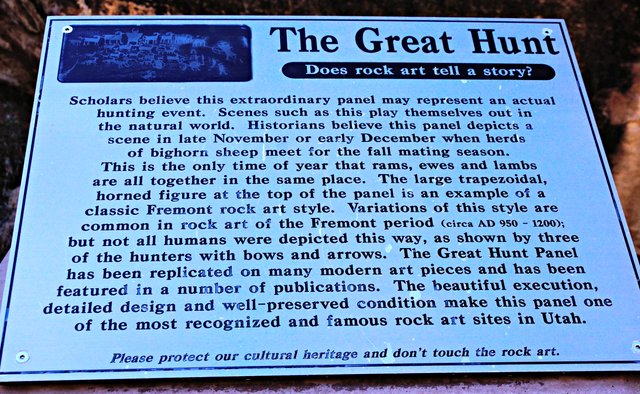
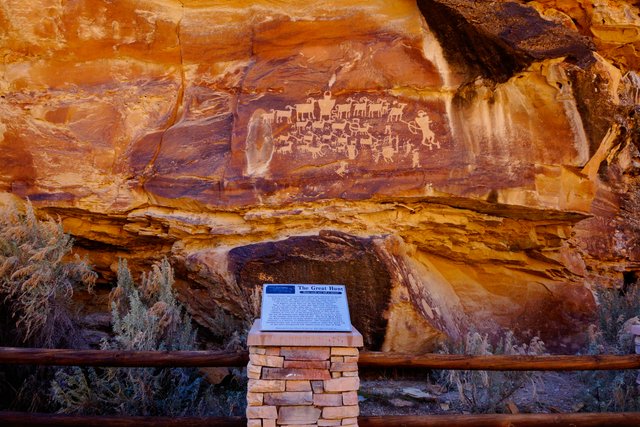

More petroglyphs and pictographs around the walls of the Great Hunt panel.
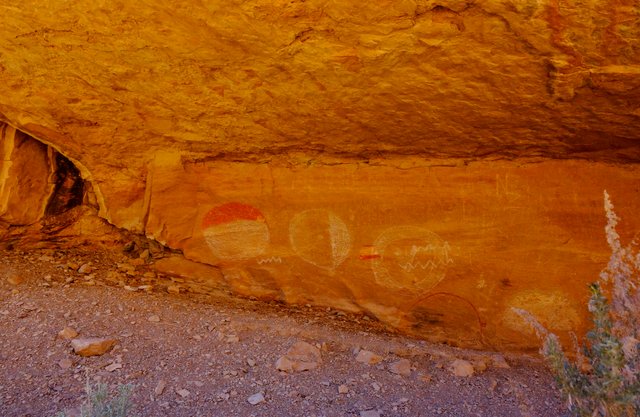
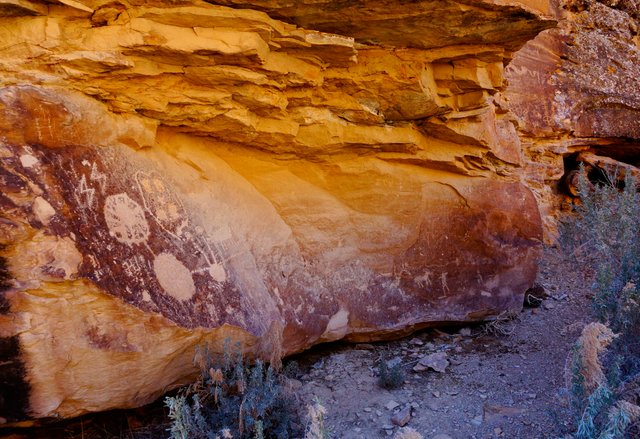
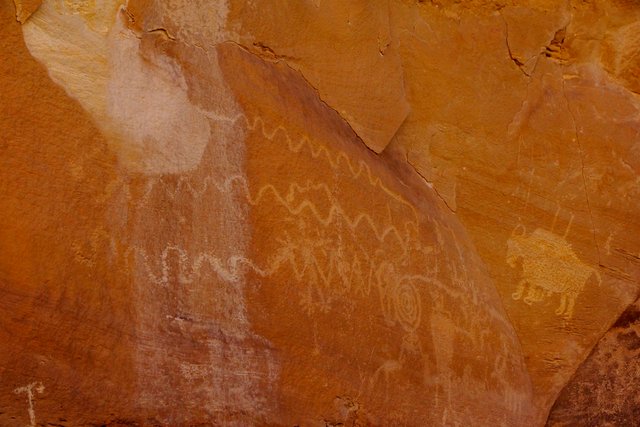
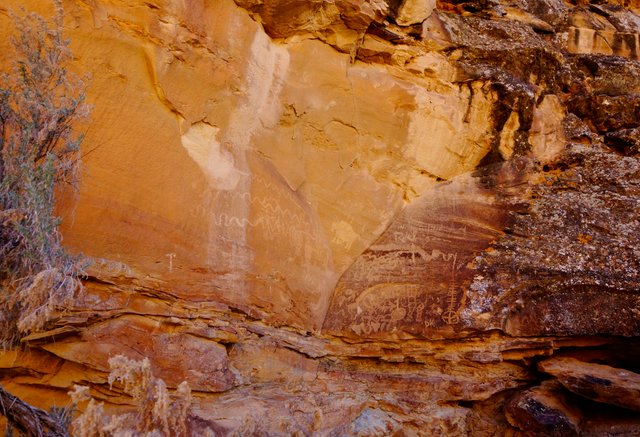
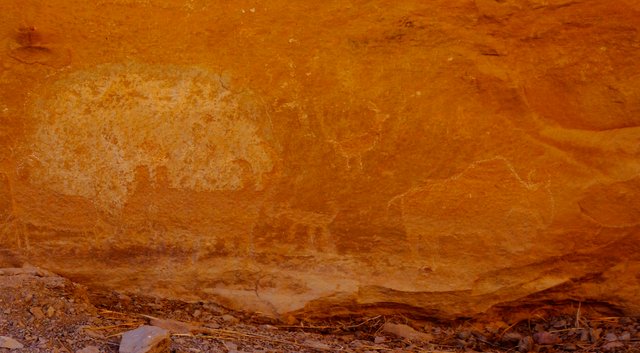
Nine Mile Canyon is a remote area, so be prepared with ample water, food, full tank of gas, etc.
I hope you enjoyed the photo tour of Nine Mile Canyon and the ancient rock art. Please upvote, resteem and follow for more adventures.
Wow... Your Photos go on and on... I've seen something similar in a place called "The Valley of Fire"... It's in Nevada between Las Vegas and Mesquite...
@pocketechange
... ... $777 ... .... 1 Vote ... ... .... Reset
wow nice pic and article
Thank you, glad you liked it.
Love this!
Thanks for taking a look, and commenting.